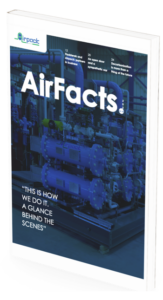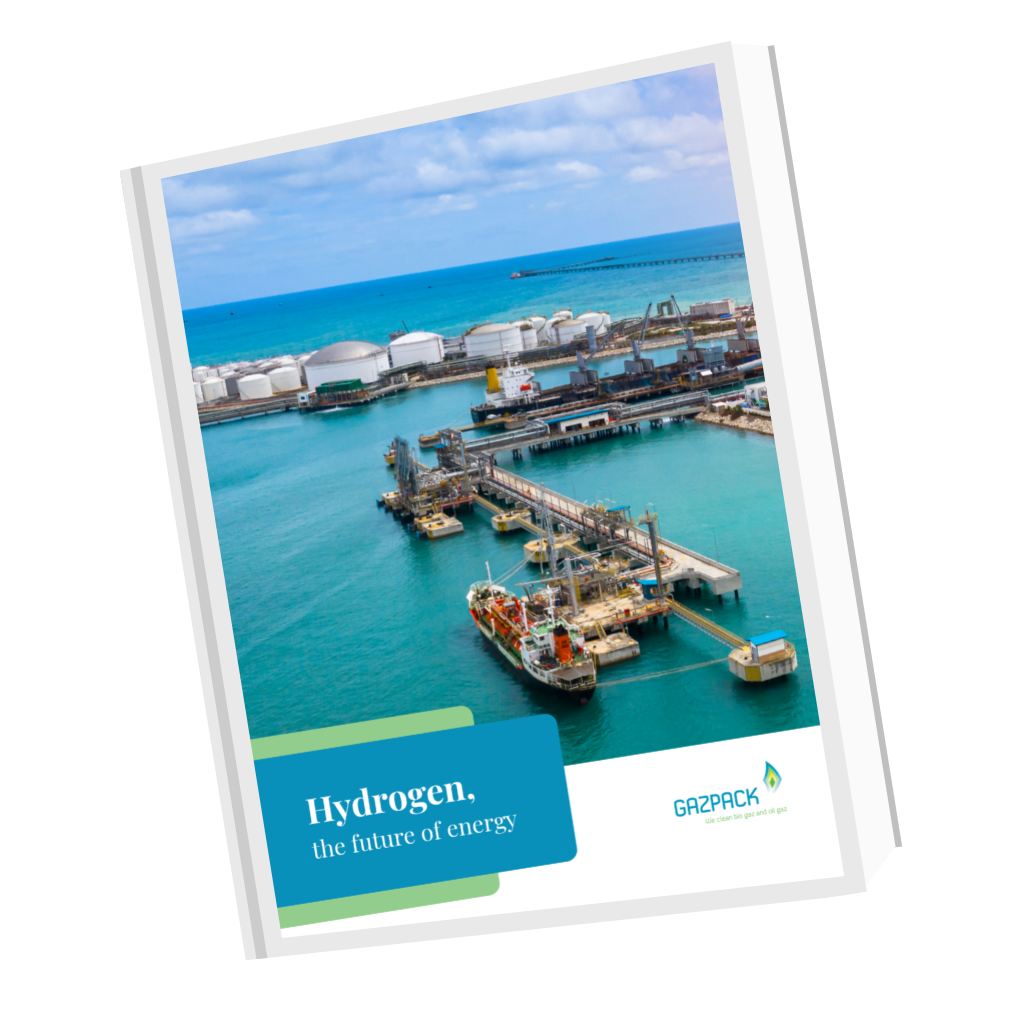Biogas Compressor (Compressed Biogas)
Looking to explore the world of biogas processing and handling solutions? Get instant access to our documents about biogas technology.
Using biogas as renewable natural gas affords strong benefits, both economic and environmental. Among them is the expansion of the overall energy supply enjoyed by nation-states, regions and local communities. In addition, infrastructure related to biogas provides investment and jobs wherever it is located. Beyond these, the improvement of air quality due to carbon-neutral emissions is substantial. Of course, these contributions exact a cost: biogas plants are highly priced expenditures. Nevertheless, compression technology has made biogas into a transportable, storable, effective energy commodity that is expected to more than pay for itself over time. Does compression really make the difference?
Biogas and Its Purposes
Some contend that biogas has a history of employment dating back thousands of years. Whether that is true or not, a safe observation is that biogas was understood as an energy originator as far back as the 18th century. In essence, this gas is the product of organic decay when oxygen is not present. This process encompasses a wide range of materials. An animal carcass, for instance, or wastewater sludge; vegetative waste dumped by a landscaper; swine manure or deer droppings; and the food scraps in a family’s compost pile are all but a sample of organic matter.
When such biodegradeable material lacks oxygen, specific bacterial microorganisms start to break down the matter, forming new chemical compounds over a series of phases. When all decomposition is done, methane, carbon dioxide and other compounds — in much smaller proportions — are discharged from the rotting biomass. Given the modern exigencies related to energy independence and climate change, biogas — long an unsung alternative origin for energy — is receiving new appreciation for its capacity to generate electricity, heat residential and commercial buildings, as well as feed transportation vehicles. Compression is essential to this last economic activity.
Compressing Renewable Natural Gas
Before discussing the workings of a biogas compressor, we must understand the need for content purity. To comply with vehicle fuel specifications, the proportion of methane to all else should be at least 97 percent. This means cleansing the biogas of water vapor, hydrogen sulfide and carbon dioxide. CO2 will not impede the biogas performance but it surely occupies fuel tank space that could otherwise be filled with the upgraded biomethane. There are numerous ways to effectuate the cleansing of biogas. Their criteria for selection include the organic materials for biogas production; the scale of the plant or project; and the purpose of the purified biogas. Once rid of contaminating and unnecessary compounds, the biomethane is sufficiently unadulterated for injection into a pipeline, deposit into a storage tank or direct input into a transport vehicle.
Whatever the immediate destination, compressing the gas is the next step. If the biomethane is to be stocked for later use, the compression force is usually about 3,500 pounds per square inch (psi). If it is to be transported by tanker truck, that pressure can rise to 4,000 psi. Pipeline conveyance most often allows for 1,000 psi or less. These various pressure applications actually squeeze the biogas molecules to hasten their movement from one location to another. A biogas compressor may be needed at the point of collection to aid in cleansing the gas of water vapor and other detrimental compounds. Alternately, compressor of biogas is called on as the gas travels through miles of pipelines of diverse dimensions. Finally, closer to the point of retail dispensing, a biogas compressor machine can treat the gas so it conforms to all safety and health standards.
Renewable natural gas is frequently compressed in stages. The number of stages depends on its volume at standard atmospheric pressure and the intended pressure needed for movement or storage. A multi-phase compressor of biogas is composed of several cylinders of declining dimensions — the smaller the cylinder, the higher the pressure. Many systems employ hydraulic fluid to push a piston upward inside the cylinder until it obtains the desired pressure. This can be dubbed a reciprocating compressor since the piston creates positive displacement, releasing the gas at a smaller volume. Screw compressors, on the other hand, use two integrated rotors to condense the gas. Here the gas is drawn into the compressor by suction and moves through the threads of the helical rotors, thereby getting compressed and released at a higher pressure.
What Kind of Investment Does a Compressor Require?
As noted above, compressors come in variable sizes and designs. Biogas compressor price can range from modest to cost-prohibitive. Key to any investment, of course, is the return. When will the compressor pay for itself? That question is answered by the volume of biogas processed and sold. Yet other factors also come into play, including how well the compressor prevents leakage and performs at an efficient level. Operational costs — or life cycle costs — factor into any compressor investment as much as the purchase price.
In Summary
Compression (Compressed Biogas) opens up more avenues for biogas since it allows the gas to more easily move from place to place and — in addition — occupy less space in storage. As retail and wholesale demand for this renewable energy source grows, the infrastructure of conveyance and inventory holding mandates the employment of compressors. These processing components are engineered in diverse sizes and configurations. The process of biogas compression and storage is a crucial step in the biogas production cycle, enabling the efficient utilization of this renewable energy source for various applications. Compressed biogas for vehicles provides a sustainable and cleaner alternative to traditional fossil fuels, significantly reducing the carbon footprint of transportation.
Biogas Compressor (Compressed Biogas)
Looking to explore the world of biogas processing and handling solutions? Get instant access to our documents about biogas technology.
As countries, cultures and economies aim to move away from fossil fuels in favor of energy sources more benign in atmospheric impact, they have an array of options from which to choose. Solar panels, wind turbines, hydropower dams and geothermal units dot the various landscapes, reflecting a shift in thinking about how power is produced. Yet another naturally occurring phenomenon is taking center stage among renewable energy actors — biogas. Emerging from the oxygen-free decay of organic substances, biogas is proving to be a reliable stand-in for fossil fuels. Acknowledging this development, scientists continue to work on systematizing its production.
Where Does Biogas Originate?
Biogas can come forth from wastewater and sewage; cow and pig manure; food waste and garbage; dead tree limbs and dead forest creatures; and a host of other organic materials. Essential is that this matter deomposes cut off from any and all oxygen supplies. Thus biogas is created consistently under natural circumstances: under a pile of fallen leaves or within a heap of grass clippings, for instance, or in a swamp or the corner of a barn. However, biogas can also arise from human arrangements, like landfills and compost piles. We, then, can effectuate the generation of biogas.
Whether made spontaneously or by design, biogas consists mostly, though not exclusively, of methane (CH4) and carbon dioxide (CO2). The methane is key to its energy capacity. Additionally, biogas contains small percentages of water, nitrogen, hydrogen sulfide and other volatile organic compounds. In fact, raw biogas has a very similar chemical composition to the natural gas extracted from mineral deposits — without the greenhouse gas emissions, that is. Though miniscule among the overall content, these lesser components can do damage to public health, tanks, pipelines and the general efficiency of the biogas. Nature can not remove them but people can.
So, where do these gases, desirable or detrimental, come from? As organic matter disintegrates without oxygen, bacteria form that break the sunstances down over the course of multiple chemical reactions. As chemical compounds morph from one to another, the final reaction is the emission of biogas. As engineers and technicians develop technology to expedite this anaerobic digestion, as the process is known, they also discover more applications for biogas as well as the means to remove the tiny but pernicious trace compounds. All of this is an effort to build a comprehensive and optimal biogas system.
From Manure to Renewable Energy
Using swine manure as a model organic material — sometimes alled substrate or feedstock — the first order of business is to supply an anaerobic digester, or biogas reactor, with an appropriate amount of manure to yield the needed quantity of biogas. Remember though that the digester needs space for the gas to separate from the substrate, space often afforded by an arced top. Manure from pigs is ideal since it is stored as slurry, keeping oxygen from infiltrating it. Adding water also helps to dilute the ammonia content; ammonia can supress methane production. Pre-heating the manure (to 95 degrees F or more) can likewise expedite the digestion process.
The feedstock enters the digester through an inlet. Within the digestion tank itself, an agitator begins rotating — think of a clothes washing machine — to more evenly distribute the microorganisms throughout the substrate. This also serves to diminish the size of any solid particles and thereby minimize digestion time. The slurry can be pumped in or drawn in from beneath the slats of the swine housing; from a lagoon; or from a intermediary pre-treatment vessel.
On a mid-size to large hog farm, continuous biogas reactor types are likely employed due to the substantial amount of manure produced. This means the digester is supplied with new feedstock at least two to three times each day. Using pig manure, extension researchers at the Pennsylvania State University conclude that this type of substrate requires seven to 10 days retention in the digester to allow for maximum biogas production. Once digestion runs its course, biogas is collected for further treatment. The sunstrate — now called digestate or effluent — can serve as a highly nutritious fertilizer, animal bedding or manufactured product components. The biogas, meanwhile, may need cleaning.
Removing toxic and corrosive chemical compunds from biogas has many variants. On a farm biogas system, the gas stream is run through iron shards or steel woll. More sophisticated membranes may be employed at other facilities, e.g. water treatment plants. Alternately, the gas stream can flow through an amine solution that absorbs the extraneous compounds or be adsorbed by a chemically treated solid like activated carbon. The type and extent of cleansing depends on the purpose of the biogas. Biomethane, for vehicle fuel, calls for the most exhaustive refinement. At any rate, purification is a common component in most biogas installation apparatus.
In Summary
A biogas generator set can be small and fitted for single household use. On the other hand, a large biogas plant can supply renewable natural gas for hundreds of transportation vehicles or afford a power source for a public electricity utility. While sale and use may vary, each system requires a way to receive the substrate; an oxygen free digestion tank; separate collection areas for gas and digestate; and an element to scrub the biogas of harmful contaminants.




